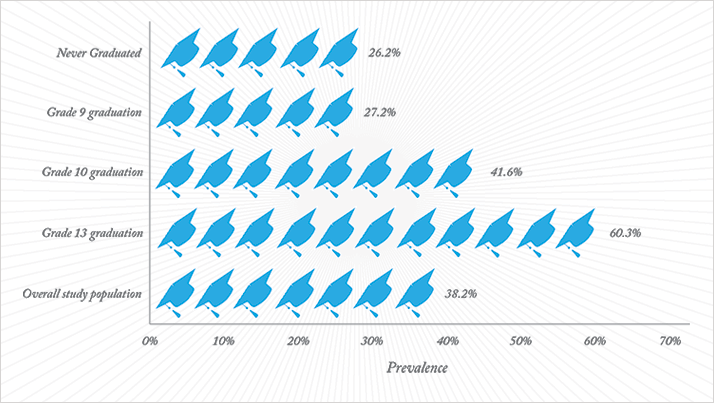
Myopia is rapidly increasing in prevalence, yet the reasons why are unclear. Genetic factors appear to play a role, but the swiftness of myopia’s rise would appear to preclude this as the main reason, leaving environmental factors as the most likely explanation. But which ones? Spending too much time indoors? Close work? Reading? Perhaps the latter. It would appear that the probability of a person being nearsighted rises with educational attainment.
The Gutenberg Health Study (GHS) is a large-scale prospective, population-based study of the health of over 15,000 people aged between 35 and 74 years (at enrolment) within the mid-German region of Mainz-Bingen. A subgroup of 4685 GHS participants underwent physical and ophthalmological examinations (those with prior cataract or refractive surgery were excluded), and DNA samples were taken for genetic analysis of small nucleotide polymorphisms (SNPs) (1). The educational attainment status of all participants was also established. Myopia was present in 38.2 percent of the population, but of those who graduated after 13 years in the three-tiered German secondary school system, 60.3 percent were nearsighted, compared with 41.6 percent of those who graduated after 10 years, 27.2 percent of those who graduated after nine years and 26.9 percent of those who never graduated (Figure 1).
The percentage of myopes was higher among university graduates than among graduates of vocational schools or those who had no professional training at all. Statistical modelling was employed to determine if these effects were significant; the association remained after adjusting for age, gender and many known myopia-associated SNPs. The lead author of the study, Alireza Mirshahi, noted that, “The effect on myopia of the genetic variations is much less than the effect of education”, explaining that “we used to think that myopia was predetermined by genetics. This is one proof that environmental factors have a much higher effect than we thought.”
References
- A. Mirshahi, K.A. Ponto, R. Hoehn et al., “Myopia and Level of Education: Results from the Gutenberg Health Study”, Ophthalmology, pii, S0161–6420(14)00364-9 (2014). doi: 10.1016/j.ophtha.2014.04.017.
